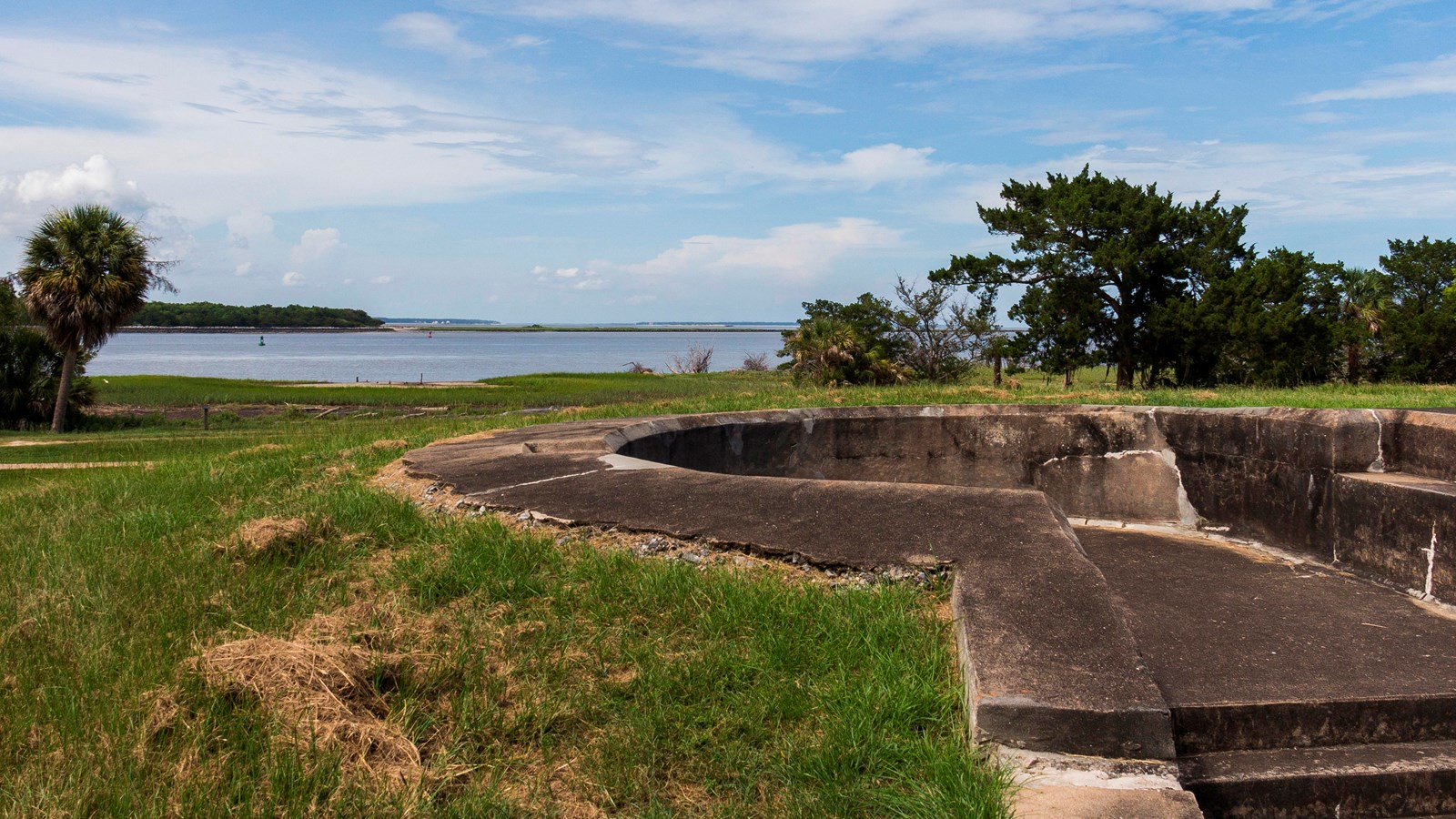Last updated: December 6, 2024
Place
Battery Hambright

NPS/Cadoff
In 1885 President Grover Cleveland appointed a joint Army, Navy, and civilian board, headed by Secretary of War William C. Endicott, to investigate the state of the nation’s coastal defenses. The findings of the Board painted a grim picture of neglect. The board recommended a massive $127 million construction program for a series of new forts with modern breech-loading steel guns, mortars, and submarine mines. The Endicott Era Forts, as they became known, ushered in a new age of fort construction, one that saw the transition from brick and stone to one of concrete and steel.
With the construction of Fort Screven on the horizon, a submerged minefield was designed to guard the entrance to the Savannah River. Fort Pulaski was chosen to be a control center and storage facility for one of these minefields. These underwater mines, anchored to the bottom of the river, could be detonated by an operator at the fort or set to explode on contact.
When the United States went to war in 1898 with Spain, the Army began planning new protections for the minefield near Fort Pulaski. Battery Horace Hambright was one the last of the original defenses to be built at the mouth of the Savannah River. Construction began on June 1, 1899. Underneath the battery, there is a foundation of 30,000 bricks that were taken from the remains of the original Fort Pulaski construction village, which had been destroyed in an 1881 hurricane.
Battery Hambright is a poured-in-place, unreinforced concrete gun emplacement. It was designed to hold two rifled 3-inch guns on disappearing, masking pedestal mounts, which could be rapidly fired at any lightly armored fast moving ships. The battery was completed, with the exception of mounting the guns, on March 31, 1900, for a cost of $12,800.
In 1904, the War Department named the battery at Fort Pulaski in honor of Horace George Hambright of Loudon, Tennessee. Born on September 24, 1869, Hambright later attended the US Military Academy at West Point, graduating last in his class in 1892. Upon his graduation, he was promoted to 2nd Lieutenant and assigned to the 22nd United States Infantry. Hambright served on garrison duty at Fort Keogh, Camp Merritt, and at Fort Yates in North Dakota. It was at Fort Yates where he was thrown from his horse and died of his injuries, on April 15, 1896. Battery Hambright was named after a likely charming young officer whose Army and Navy Journal obituary stated, his death:
". . . has been a painful shock to his numerous friends, especially at Fort Keogh, his former post of duty. He was a young officer of great promise and by his genial disposition and gallant bearing had greatly endeared himself to his brother officers and the various members of their families during his term of service with them."
Ironically, Battery Hambright’s service was just as short. It never saw military action, and in fact, never received the guns it was designed to hold.
Battery Horace Hambright remains in good condition today and provides an excellent opportunity for visitors to Fort Pulaski to see how military engineers adapted to technological changes after the American Civil War and continued to the develop new technologies in an attempt to defend the nation’s coastlines. The differences between the two eras are stark.
-
Battery Hambright Ranger Talk
Listen to a park ranger talk about this tour stop.
- Credit / Author:
- NPS/Cadoff
- Date created:
- 07/01/2020
